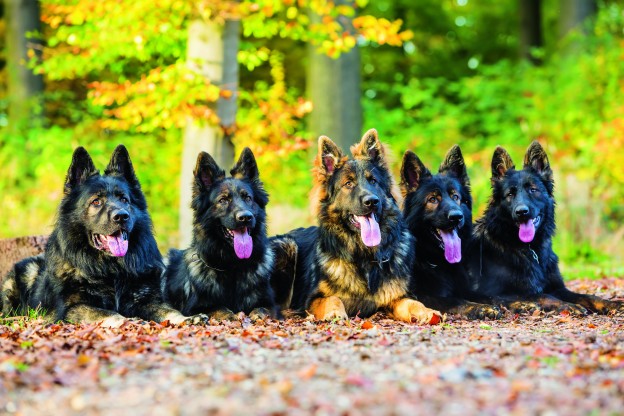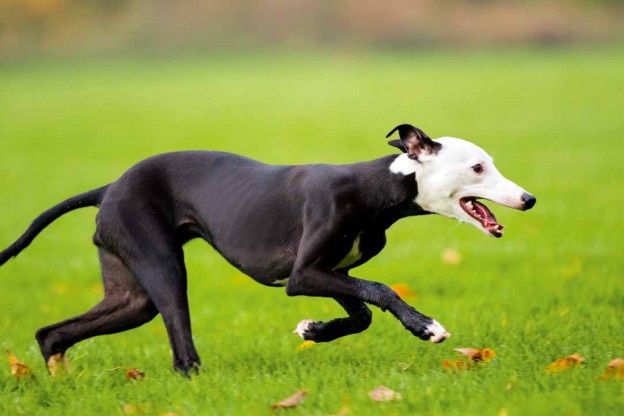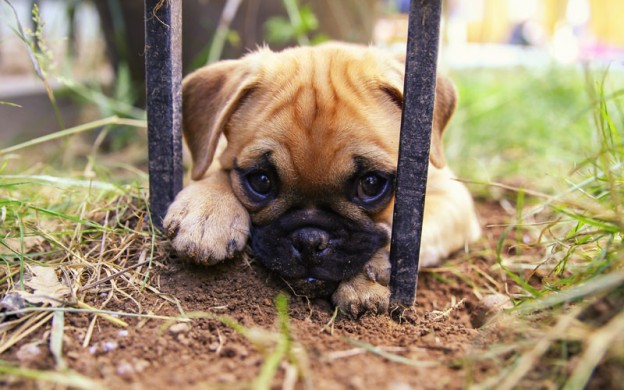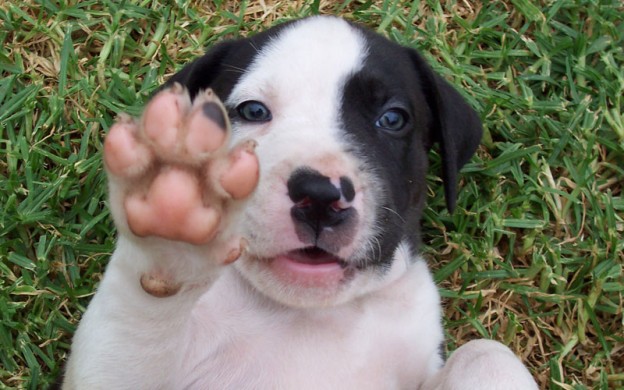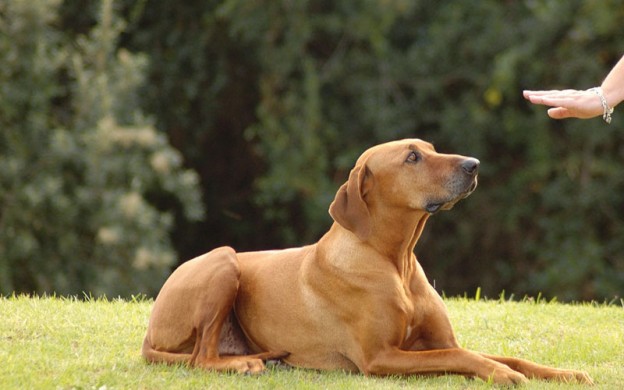If you’ve just got a puppy, be warned. You are likely to lose something of value in the not-too-distant future. Why? Because puppies love and need to chew!
Many people ask why dogs chew. In most cases dogs chew because it is a perfectly normal way for them to explore, investigate and play with their environment. Dogs don’t have hands. If something smells interesting, the next step is popping it in the mouth to check out the taste, texture and ‘rip-ability’. Young kids do much the same but while the ‘oral’ stage only lasts a short time in humans, it can go on for a lifetime in dogs.
Most owners appreciate a young puppy’s need to chew as their baby teeth drop out and are replaced by permanent teeth. However, few realise that this process, which begins at around four months, may take another five months to complete. Even after this time the adult teeth need time and exercise to settle into the jaw. A more realistic expectation is that dogs can be expected to chew enthusiastically for at least the first 18 months of life and many will enjoy doing so to age three and beyond.
Prevention better than cure
It is far easier to prevent problem chewing than to try to train against such a normal and self-rewarding behaviour. We don’t really want to stop our dogs chewing. We simply want to re-direct the behaviour to designated dog toys. Here are a few ideas:
- Provide your dog with long-lasting interactive chew toys such as Bustercubes, treat balls, Activity Boats, Kongs, hollow marrow bones or Goodie-ships.
- Rotate the toys and fill with a variety of treats/foods. Kongs, for example, can be filled with beef stock and frozen to make engaging treats in the summer time.
- Once a week or so, give your dog a meaty bone to rip and chew. The tearing and chewing of the raw meat is a good and slightly different jaw exercise to chewing on bone.
- Praise your dog when he is choosing to play with his own toys.
- Don’t give your dog old shoes, socks or other items to play with that are hard to distinguish from his allocated toys.
- Confine your dog to an area where he is unable to access valuable items. Only allow your dog out of this area when you are able to provide constant supervision.
- Make the transition to full freedom of the house gradually. For example, don’t confine your puppy in his playpen one day and leave him the run of the whole house the next while you go to work. Rather, slowly increase the area your dog is allowed to occupy over weeks and months, as he becomes trustworthy.
- Make sure your dog is getting plenty of physical exercise, mental stimulation and social interactions on a regular basis. Boredom contributes to destructive chewing.
Punishment?
Punishing your dog long after he has destroyed something is as silly as punishing your dog for barking hours after he has stopped. Even though your dog may look guilty when you come home to destruction, he is reacting to your angry body language, not knowing what he has done ‘wrong’ — (a human value judgment). Punishing your dog so long after the event will only cause the dog to become fearful and may contribute to more serious stress-related destructive behaviours.
If there is an area where your dog’s chewing is really a problem, such as stealing food from a counter top, you can try remote punishers such as ‘shaker’ cans or ‘snappy traps’. These will make loud noises when your dog sets them off in an attempt to reach a desired item. The advantage of these devices is that the ‘punishment’ is applied at exactly the right time (immediately after the behaviour) and is not in any way associated with, or dependent on, your presence.
For dangerous items such as electrical cords that cannot be removed, you can try one of the many over-the-counter preparations to deter chewing, such as Bitter Apple or Citronella oil. Different substances may be effective on different dogs.
It is better to ‘Give’ than to ‘Steal’
It’s great to teach your dog to retrieve and one of the best ways to start is to praise and reward your puppy for putting anything and everything in his mouth. Puppies who have been punished for picking things up are often reluctant to learn this very useful skill later in life.
Don’t punish your puppy for picking things up. This behaviour only becomes a problem if your puppy won’t give back what he has found.
Regularly check what your dog is chewing, including his special toys. Either take them away, look at them and give them back, or swap them for something even better, such as a delicious treat. This will prevent your puppy learning that:
- You don’t think his toys are good stuff because you never take an interest in them.
- When he finds good stuff (anything but his toys) you try to take it away.
- If he runs away with good stuff, a great game of ‘catch me if you can’ can be initiated.
‘Stealing’ and ‘hide-away chewing’ are easily cured by doing lots of ‘swaps’, effectively rewarding your puppy for chewing in front of you. The next time your puppy has your slippers, quietly say, “Can I have a look?” Then look and swap for a treat. Before long, rather than chasing your pup around the house you’ll be able to sit back and say, “Fetch me my slippers!”
Destructive behaviour
More serious, destructive chewing tends to be seen in older dogs. In some cases, the reason may remain an individual dog’s personality — simply finding excessive chewing fun and self-rewarding. This is most commonly seen in energetic working dogs without a job to do, living in a non-stimulating environment and determined to create their own ‘work’. However, in many cases, general destructiveness can be a symptom of a deeper behavioural problem such as:
Separation anxiety:
- Occurs only in the owner’s absence.
- Usually commences within the first 30 minutes of the owner leaving.
- Often damages doors and windows and carpets in front of these structures.
- Selects items that smell strongly of the owner, such as socks or shoes.
- Accompanied by other signs of anxiety.
Fears & phobias (such as fear of thunderstorms, fireworks, etc):
- Only occurs in the presence of the fearful sound or object.
- May destroy things in an attempt to find a ‘safe place’, such as furniture, carpet in an attempt to burrow behind or underneath.
- May try to get into or out of the house causing damage to windows, doors, and/or digging and damage to the fence.
- May or may not be seen in the presence of the owner.
Territorial aggression/redirected frustration:
- May be caused by someone passing by the house (the mailman) resulting in the dog lunging and pawing at windows, doors or the fence in an attempt to get to the passerby.
- May be seen in the presence of the owner.
- Likely to show other signs of territorial aggression as well.
In all of the above cases, the destruction is likely to be intense and may be directed at a desire to either get into or out of a house, crate or other confined area. The dog often ‘attacks’ solid objects such as doors and fences rather than soft objects such as cushions or books. If your adult dog is exhibiting any of the signs above, a full behavioural history needs to be recorded and considered before deciding on possible treatment. Self-diagnosis and treatment can cause your dog harm if the problem is not correctly managed or diagnosed.
Keeping it in perspective
In most cases, ‘excessive’ chewing is just normal, if annoying, dog behaviour which reduces as dogs grow older. It is important to keep a sense of humour and realise your dog is not being spiteful, angry, rebellious or malicious when he chews up your favourite book or shoe. Even though he may show a preference for particular items belonging to particular people (smelly shoes, socks, undies and remote controls are common choices), it’s probable your dog ate it just because — like Mt. Everest — it was there. Remembering to pick up possible chew items is also recommend during these puppy and adolescent stages.
Written by Karin Bridge, Trainer



